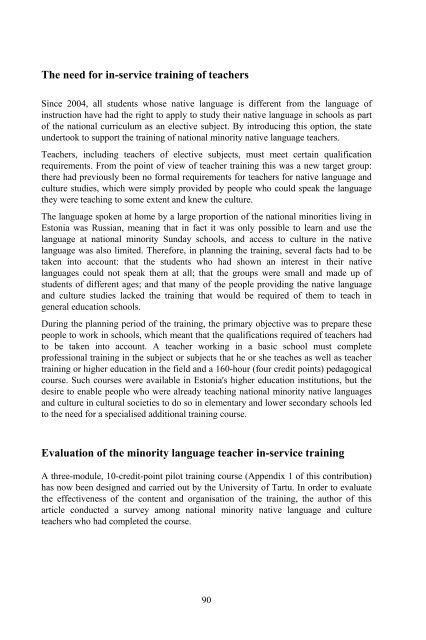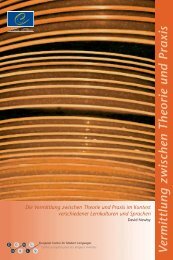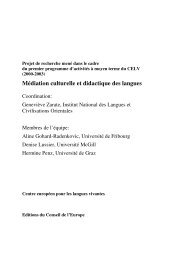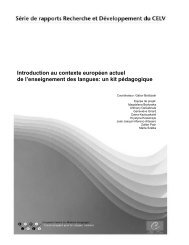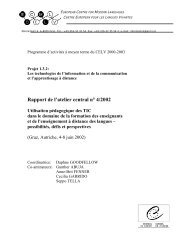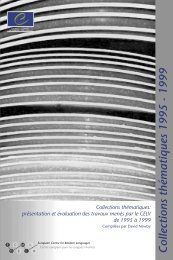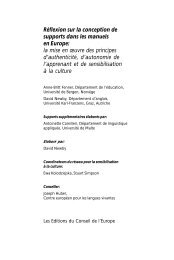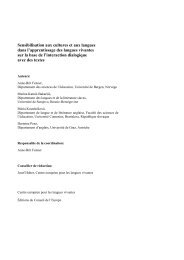cohesion - European Centre for Modern Languages
cohesion - European Centre for Modern Languages
cohesion - European Centre for Modern Languages
You also want an ePaper? Increase the reach of your titles
YUMPU automatically turns print PDFs into web optimized ePapers that Google loves.
The need <strong>for</strong> in-service training of teachers<br />
Since 2004, all students whose native language is different from the language of<br />
instruction have had the right to apply to study their native language in schools as part<br />
of the national curriculum as an elective subject. By introducing this option, the state<br />
undertook to support the training of national minority native language teachers.<br />
Teachers, including teachers of elective subjects, must meet certain qualification<br />
requirements. From the point of view of teacher training this was a new target group:<br />
there had previously been no <strong>for</strong>mal requirements <strong>for</strong> teachers <strong>for</strong> native language and<br />
culture studies, which were simply provided by people who could speak the language<br />
they were teaching to some extent and knew the culture.<br />
The language spoken at home by a large proportion of the national minorities living in<br />
Estonia was Russian, meaning that in fact it was only possible to learn and use the<br />
language at national minority Sunday schools, and access to culture in the native<br />
language was also limited. There<strong>for</strong>e, in planning the training, several facts had to be<br />
taken into account: that the students who had shown an interest in their native<br />
languages could not speak them at all; that the groups were small and made up of<br />
students of different ages; and that many of the people providing the native language<br />
and culture studies lacked the training that would be required of them to teach in<br />
general education schools.<br />
During the planning period of the training, the primary objective was to prepare these<br />
people to work in schools, which meant that the qualifications required of teachers had<br />
to be taken into account. A teacher working in a basic school must complete<br />
professional training in the subject or subjects that he or she teaches as well as teacher<br />
training or higher education in the field and a 160-hour (four credit points) pedagogical<br />
course. Such courses were available in Estonia's higher education institutions, but the<br />
desire to enable people who were already teaching national minority native languages<br />
and culture in cultural societies to do so in elementary and lower secondary schools led<br />
to the need <strong>for</strong> a specialised additional training course.<br />
Evaluation of the minority language teacher in-service training<br />
A three-module, 10-credit-point pilot training course (Appendix 1 of this contribution)<br />
has now been designed and carried out by the University of Tartu. In order to evaluate<br />
the effectiveness of the content and organisation of the training, the author of this<br />
article conducted a survey among national minority native language and culture<br />
teachers who had completed the course.<br />
90


